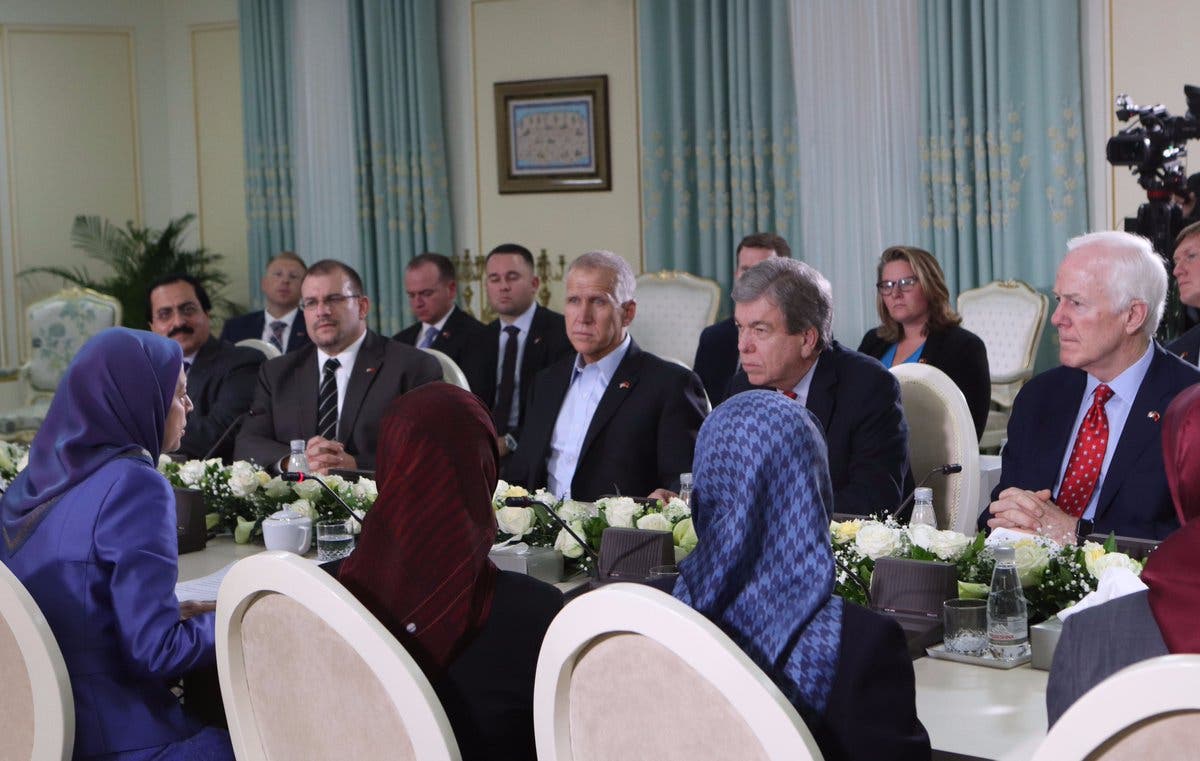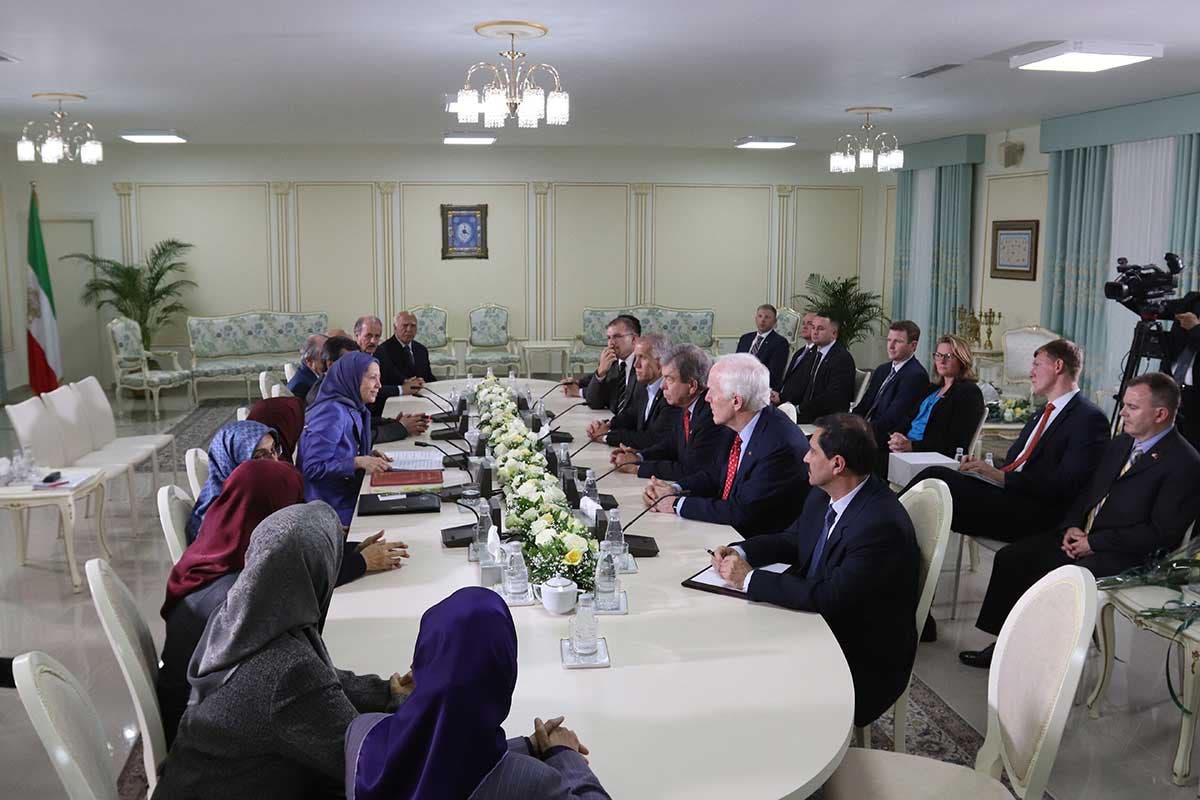All the President’s Men: #Iran’s Cabinet Candidates
While humans lack the ability to see
into the future, we do possess the power to analyze our world to predict
what the future has in store for us. The result of Iran’s so-called
presidential election back in May rendered a second term for the
incumbent Hassan Rouhani. During Iran’s short election season, lasting
no less than a month, the mullahs’ cunningly downgraded crackdown
measures,
decreasing executions and increasing social freedoms to lure the general public into polling stations.
Nevertheless,
the all-male slate of cabinet candidates presented by Rouhani to the
parliament for approval provides a dark insight of what awaits the
Iranian people and the international community. To make a long story
short, these are names consisting of former Revolutionary Guards (IRGC) members, hostage takers, executioners, torturers and thieves.
This
is a signal of Iran fueling a future of further wars, crackdown,
massacres, exporting terrorism and fundamentalism, and killing sprees
targeting the region’s nations.
While
Iran apologists and the appeasement camp misled the international
community to naively describe Rouhani as a smiling “moderate,” his first
term rendered over 3,000 executions and went mostly neglected. Knowing
the Obama administration desperately needed a legacy-defining foreign
policy achievement, Rouhani and the mullahs saw a green light to press
the gas pedal on executions.
After deactivating the gallows shortly for the May elections, the mullahs returned to their true nature and resorted to over 100 executions in July alone. This consists of an average of at least one execution every eight hours.
This
should be a wake-up call for European states that have banned
executions altogether, and yet are willing to signature lucrative
economic deals with Tehran, such as Airbus, Total and Renault.
Rouhani’s
list of cabinet candidates has raised quite a stir. After providing a
variety of promises during his election campaign, he failed to present
even a single female minister candidate. Only under a wave of protests
and pressures did Rouhani give in to naming three female vice
presidents, providing nothing more than symbolic roles.
There
are also reports indicating Rouhani ran through his candidates in close
coordination with Iranian Supreme Leader Ali Khamenei. This goes
against Iranian political norms — Khamenei is known to have a say in a
number of specific candidates, including the key ministers of defense,
foreign affairs and intelligence.
Anger
mounted during his first term over Rouhani’s ironic decision to appoint
Mostafa Pourmohammadi as his justice minister. Pourmohammadi is known
for his direct role in the notorious 1988 massacre of
over 30,000 political prisoners, mostly members and supporter members
of the Iranian opposition People’s Mojahedin Organization of Iran (PMOI/MEK).
And
while Pourmohammadi is set aside in Rouhani’s second term cabinet, his
replacement, Alireza Avaie, is adding insult to injury. Avaie also
played a leading role in the 1988 massacre in Khuzestan Province,
southwest Iran. The Iranian opposition National Council of Resistance of
Iran (NCRI)
held a press conference in September unveiling Avaie’s involvement in
executions of Younesco Prison in the city of Dezful. The majority of
Iran’s Arab community are resident in the country’s southwest regions.
Other
names in Rouhani’s cabinet indicate a bleak second term riddled with
crackdown measures and going back on all election season promises.
Mohammad
Javad Azari Jahromi is appointed to serve as the new minister of
communications and information technology. This is an individual who
entered the mullahs’ hated Ministry of Intelligence (MOIS) at the age of
21, becoming involved in interrogations, torture and censorship in his
early days.
During the 2009 uprising
Jahromi was appointed as the MOIS Director of Surveillance. He is known
to have expanded this department and his appointment is seen as
Rouhani’s attempt to confront the PMOI/MEK’s increasing popularity
amongst Iran’s population through social media networks. Iran is known
to have a young and very active social media population of over 40
million users.
Amir Hatami is set to
become Iran’s new defense minister. Joining the ultraconservative and
repressive IRGC Bassij paramilitaries at the age of 12, Hatami is known
for his active and enthusiastic participation in the regime’s crackdown
and killing campaigns. He is amongst the Bassij members tasked to join
Iran’s classic army and quickly rose the ranks to provide the mullahs
the influence they sought in this force. Hatami also played an important
role in identifying, arresting and eliminating any army member showing
even the slightest sign of patriotic devotion and acting against the
mullahs’ interests.
Habibollah
Beetaraf, Rouhani’s candidate for the new labor minister, was amongst
the so-called “college students” who stormed the US Embassy back in 1979
and took 52 American diplomats hostage. He was one of the first IRGC
members and participated in literally herding teenagers and even small
children into minefields during the Iran-Iraq War of the 1980s.
Iran’s
industry, mines and trade will be managed by Mohammad Shariatmadari,
famous for actively playing a part in the regime’s crackdown and
plundering. He is heavily involved in managing Khamenei’s conglomerate,
known as the “Setad Ejraiye Farmane Hazrate Emam” – Headquarters for Executing the Order of the Imam, controlling a large percentage of the regime’s economic empire. $95 billion is this massive entity’s estimated capital.
This
lineup provides a dark glimpse into what the future will bring for the
Iranian people and neighboring nations. For example, following July’s
execution spree, the mullahs’ regime reportedly sent 13 individuals to
the gallows on August 10th alone.
This
atrocity included 11 hangings in a mass killing in the city of Birjand,
eastern Iran; one execution in a small town in northern Iran; and the
horrific execution of 20-year-old Alireza Tajiki, arrested at the age of
15 at the time of his alleged crime.
Amnesty
International demanding Tehran halt this hanging fell on deaf ears and
Iran’s mullahs once again proved their sinister cruelty and lack of
respect for any humane values and international laws.
Rouhani’s
second term will bring nothing but additional economic and social
devastation, parallel to political crackdown, destructive meddling
across the region and continuing Iran’s ballistic missile/nuclear
drives. Rouhani neither has the will nor intention to bring about any
meaningful change in this regime’s foundations, infrastructure, nature
or approach.
What else is expected
from an individual who for 40 years has actively participated in the
regime’s oppression and warmongering. Rouhani was the first Iranian
regime official to call for public executions to teach the Iranian
people a lesson.
Despite claims
otherwise, Rouhani is part and parcel of the mullahs’ establishment, and
he, too, seeks to maintain this system intact and in power. Hence, the
international community needs to understand no change will emerge from
this medieval, reactionary-minded regime.
The Iranian people and their organized opposition finally deserve the support and recognition they have been deprived of for the past four decades.
originally published in the raddingtonreport








 US Senators with Maryam Rajavi in Tirana, Albania. (Supplied)
US Senators with Maryam Rajavi in Tirana, Albania. (Supplied) The delegation consisted of Senators Roy Blunt, John Cornyn, and Thom Tillis. (Supplied)
The delegation consisted of Senators Roy Blunt, John Cornyn, and Thom Tillis. (Supplied)






 NCRI
NCRI